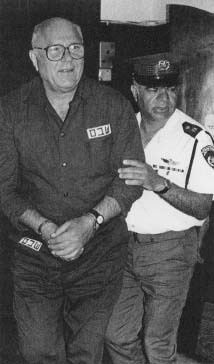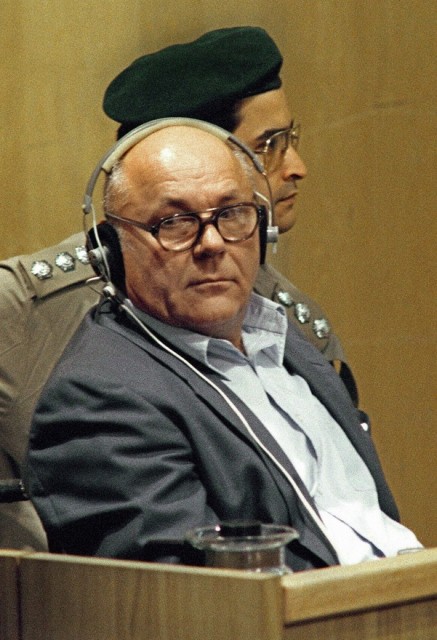Holocaust Education & Archive Research Team |
|
Trials Introduction to the Holocaust Trials
Trials
Interrogations & Testimonies
The IMT Series Nazi Justice | |||||||
Iwan (John) Demjanjuk "Ivan the Terrible"
John Demjanjuk, was born Iwan Nikolayevich Demjanjuk on the 3 April 1920 in the Ukrainian village of Dubovi Makharintsi, Kozjatyn Region, Vinnitsa Oblast.
His fathers name was Nikolaj who had lost several fingers during the First World War and his mothers name was Olga, the family were very poor, and they were forced to live with relatives on a collective farm (kolkhoz) near Moscow. The great famine in the Ukraine during 1932-33 had a devastating impact on Iwan Demjanjuk, as he was to recall as he stood trial for his life during 1987.
Food was abundant but there was little work, so the family were forced to return to their village. When he was about seventeen Demjanjuk started work in a local Kolkhoz, he commenced using a plough, and progressed to an assistant to the tractor driver.
Two years after joining the Communist Youth Organisation (Komsomol) he was drafted into the Red Army, where his aptitude for driving tractors was recognised. Demjanjuk was taken prisoner by the Germans at the battle of Kerch in the Crimea on the 18 May 1942. He spent a short time, a couple of weeks in a Prisoner of War camp at Rowno, before being sent to another Prisoner of War camp in Chelm in Poland.
At Chelm Demjanjuk was recruited into the SS to serve as a death camp guard, and between July and September 1942 Iwan Demjanjuk was trained to carry out these tasks. During his trial in Israel where he was falsely accused as being the Treblinka SS guard “Ivan the Terrible,” and his Trawniki Dienstausweis, was examined in close detail.
The card read that he was 1 metre 75cm tall, had grey eyes, and dark blond hair and a visible scar on his back. It also showed two postings, “L.G. Okzow on September 22 1942 and to Sobibor on March 27 1943.
The Dienstausweis bore three signatures, Karl Streibel, the Trawniki SS Commandant, Ernst Teufel the camps supply officer, and Demjanjuk’s. It also contained his camp identification number 1393. The training he received at Trawniki was aimed at instilling SS and military type discipline. The “Trawniki-manner” were assigned to platoons of 35 -40 men and companies of 120 men.
A guard who had been trained at Trawniki, J.H. Engelhardt later stated that “you were taught there to shoot with a gun, machine gun and sub-machine gun and to throw grenades and all this in the German language.”
From the 22 September 1942 till early January 1943 Demjanjuk served as a guard at the Okzow country estate in the vicinity of Chelm. The estate which also had an alcohol distillery had Jewish workers, which required guarding.
From there he was transferred to the Lublin Concentration Camp ( Majdanek) and he was punished on the 18 January 1943, along with three other Trawniki-manner for leaving the camp without permission to buy onions. A disciplinary report signed by SS – Unterscharfuhrer Hermann Erlinger was found in an archive in Vilnius.
One of the other guards punished was Zaki Tuktarov (1730 – identification number) who admitted after the war he had served in Lublin (Majdanek). From Lublin Demjanjuk returned to Trawniki and on the 26 March 1943 was despatched to with seventy –nine other guards to the Sobibor death camp.
Iwan Demjanjuk’s time in Sobibor was outlined by the former SS-Wachmann Ignat Danil’chenko post-war testimony. He confirmed that Demjanjuk served as a guard in all parts of the camp, including the unloading ramp and in Lager No.3 where the Jews were gassed and cremated in the open air, on railroad tracks.
Approximately, on the 1 October 1943 (two weeks before the revolt) Demjanjuk once again returned to Trawniki, and was sent with 139 other Trawniki-manner to the Flossenburg Concentration Camp in Southern Bavaria, Germany. In Flossenburg Demjanjuk joined the SS- Totenkopfsturmbann Flossenburg, and as an active member of the Waffen-SS was given a tattoo under his left arm, which indicated his blood group.
Demjanjuk remained in Flossenburg for over a year, then saw service in a Vlassov Army unit. Andrei Vlassov was a General in the Red Army who was taken prisoner by the Germans in July 1942. He was considered to be one of the Soviet Union’s most brilliant and successful military leaders, having distinguished himself in the defence of Moscow and Leningrad.
Upon his capture, he revealed himself to be strongly anti – Stalinist and anti-Communist and was willing to collaborate with the Nazis under certain conditions. The Germans recognised the propaganda value and established him in Davendorf, a suburb of Berlin.
There he remained for two years and with German losses mounting on the Eastern Front, Heinrich Himmler, Reichsfuhrer SS, gave Vlassov approval to establish the Russian Liberation Army on the 16 September 1944.
Demjanjuk was captured by American forces in Bishophoffen, and was then transferred to a farm near Munich, with no guards, and eventually he was taken with other Prisoners of War in trucks to Landshut, where he worked with a farmer.
Demjanjuk entered a Displaced Persons (DP) Camp in Landshut in 1945, two years later he met his future wife Vera, who also hailed from the Ukraine, but had been deported to Germany to work as a house-cleaner. Vera was married to another DP Eugene Sakowski, they had married on 1 May 1947, but a few months later he was sent to Belgium, upon his return he found his new wife living with Iwan Demjanjuk, and the marriage was doomed.
On the 1 September 1947 Iwan married Vera Kowlowa, and they moved to another DP Camp in Regensburg, Germany. He worked for the Americans driving a truck throughout Germany.
In March 1948 Iwan Demjanjuk submitted a request in Southern Germany to be recognised as a refugee by the International Refugee Organisation. In this request he stated that from April 1937 to January 1943 he had worked as a driver in Sobibor, Chelm, Poland, from January 1943 to October 1944 as a dock worker in Pillau, and from October 1944 to May 1945 as a labourer in Munich.
The Demjanjuk family grew with the birth of their first child Lydia in 1950 and Iwan now sought to make a new life for his family and on the 27 December 1951 Demjanjuk applied for a visa for America, swearing an oath before the American Vice Consul Harold Hendrikson, that he had been in Sobibor, Pillau and Munich.
He arrived by ship in New York around the 9 February 1952, he found employment as a mechanic for the Ford Motor Company in Cleveland, Ohio.
Following years of investigation He arrived by ship in New York around the 9 February 1952, he found employment as a mechanic for the Ford Motor Company in Cleveland, Ohio. In August 1958 John Demjanjuk as he was now known applied to become a naturalised U.S. citizen, and he received his naturalisation certificate on the 14 November 1958.
Family life continued a second daughter Irene was born in 1960 and a son John Jr. in 1965 and they continued to prosper. In the mid-70’s they had settled in the Seven Hills suburb, in a ranch-style house on a half-acre lot. On the morning of the 25 August 1977, John Demjanjuk was working at the factory as usual, when the storm broke that the U.S. attorneys wanted to strip him of his American citizenship for having been a suspected Nazi War criminal.
There now followed years of legal wrangling whilst the Office of Special Investigations (OSI) a unit established with investigating and prosecuting alleged Nazi war criminals fought with Demjanjuk’s lawyers to strip him of his American citizenship.
On the 25 June 1981 a Federal Court stripped John Demjanjuk of his U.S. Citizenship, because he had obtained it under false pretences, failing to mention he had worked in Nazi death camps and Concentration Camps.
The next twist in the case was that Israel now wanted John Demjanjuk to be extradited from the U.S. and stand trial for his alleged war crimes in the Treblinka death camp in Poland. John Demjanjuk had been identified by former Treblinka inmates who had survived, that he was the infamous Ivan the Terrible from Treblinka, who had operated the gas chambers at the death camp between 1942 and 1943.
On the 31 October 1983, the State of Israel requested the extradition of John Demjanuk and asked for a warrant for his arrest be issued on the charge of murder.
On the 23 May 1984 Judge Adolph F. Angelilli found John Demjanjuk deportable on all seven counts, and gave him the opportunity to leave within thirty days to the country of his choice. Demjanjuk appealed again, unsuccessfully and after incarceration in the Cleveland County jail, he was transferred to the federal prison in Missouri.
In February 1986 Demjanjuk was moved to the Metropolitan Correctional Centre on Park Row in New York City and awaited deportation. A last minute appeal was made to the Attorney General on the 27 February 1986, it was rejected and on the same day Demjanjuk’s extradition was authorised by U.S. Secretary of State George Schultz.
That same day Demjanjuk was flown by EL Al 747 from John F. Kennedy International Airport, New York to Tel Aviv, to stand trial for being the notorious” Ivan the Terrible” from Treblinka. Demjanjuk was incarcerated in Ayalon Prison and on the 1 October 1986, Justice Dov Levin was appointed to preside, also on the panel were District Court Judges Zvi Tal and Dalia Dorner.
Demjanjuk’s trial began promptly on the 16 February 1987, Demjanjuk was represented by Mark O’Connor and Yoram Sheftel was to be the defence advisor. State Attorney Yonah Blatman assembled his staff Dennis Gouldman, Michael Horovitz, and Michael Shaked was appointed to lead the Prosecution Team.
At the trial a number of survivors from the Treblinka death camp testified against John Demjanjuk, these included Pinhas Epstein, Eliahu Rosenberg, Yossef Czarny and Gustav Boraks. All the witnesses stated that the man who was Ivan the Terrible, at Treblinka now stood before them, on trial for his life, but now forty-five years after those dark and terrible days in Treblinka, could they be totally sure?
Demjanjuk was convicted of war crimes committed at Treblinka, and that he was the murderous sadistic “Ivan the Terrible” in 1988. However, in light of evidence submitted that Ivan the Terrible at Treblinka, was another Ukrainian guard called Ivan Marchenko, his appeal was successful and his conviction overturned by the highest court in Israel during 1993 and he was allowed to return to the United States of America.
Demjanjuk stood on trial again in 2001 on charges that he had served as a guard at the death camp at Sobibor, near Chelm and at Majdanek in Poland, and at the Flossenburg Concentration Camp in Germany.
History appeared to be repeating itself with another deportation order in 2005, but he remained in the United States of America. On the 2 April 2009 the Authorities announced that John Demjanjuk would be deported to Germany to face charges of accessory to murder on 29,000 counts.
Following more legal attempts to block the extradition, on the 14 April 2009, immigration agents commenced the deportation by removing John Demjanjuk from his home in a wheelchair to take him to Burke Lakefront Airport in Cleveland, to catch a plane to Munich, Germany.
At the last moment the deportation was halted due to concerns over John Demjanjuk’s health, and another stay was granted by the court. However, the US appeals court overturned this ruling on the 1 May 2009, as despite the claims from his family, the US Government filed video film of him walking unassisted.
John Demjanjuk was deported to Germany, arriving on the morning of the 12 May 2009, and was incarcerated in Stadhelm prison in Munich.He faces charges of being an accessory to the deaths of 29,000 Jews at the Sobibor death camp in Poland.
Wolfgang Benz, head of the Centre of Anti-Semitism Research at Berlin university, said “the case was about establishing whether Mr. Demjanjuk was guilty, not exacting a punishment. This is about guilt, about avenging a crime, about responsibility for a criminal act.”
Sources:
Ivan the Terrible by Tom Teicholz, published by Futura Books 1990 The Activities of Wachmann Iwan Demjanjuk (1940 -1952) by Johannes Houwink ten Cate BBC News at Six Website US National Archives Hitler’s Death Camps by Konnilyn Feig, published by Holmes and Meyer New York 1981 The Holocaust Historical Society Archives
Copyright. Chris Webb H.E.A.R.T 2009
|
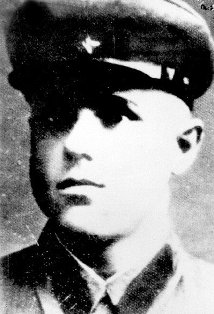
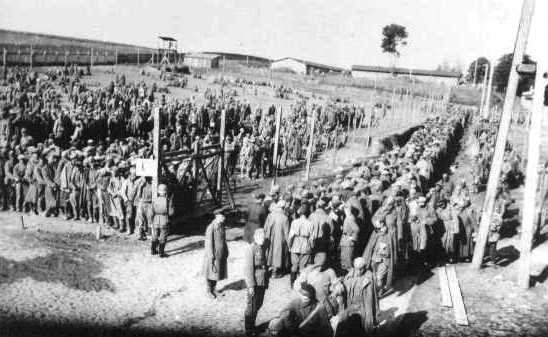
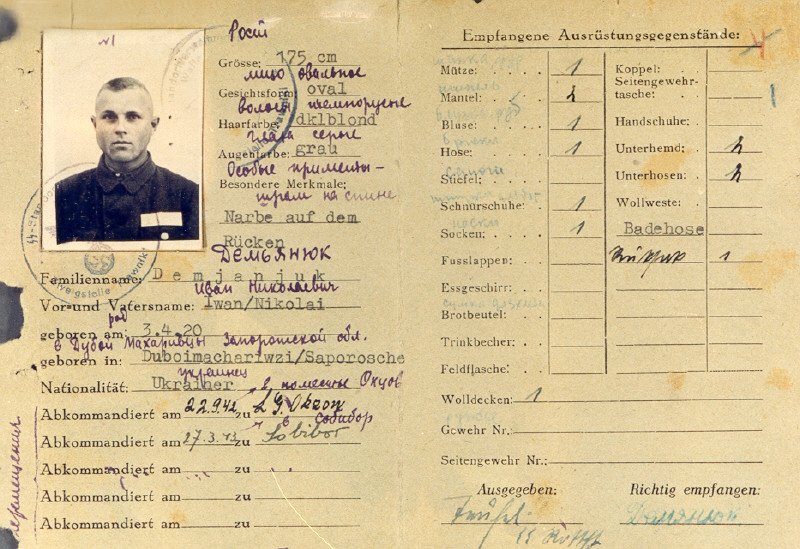
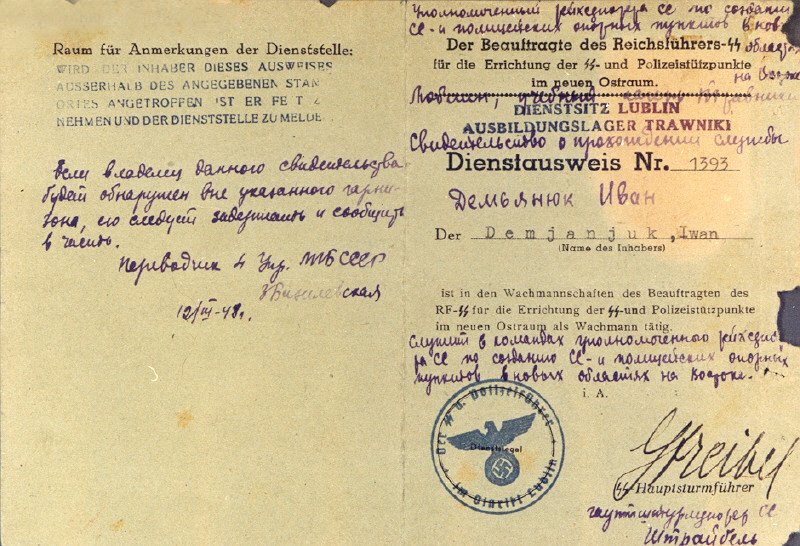
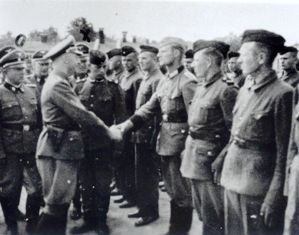
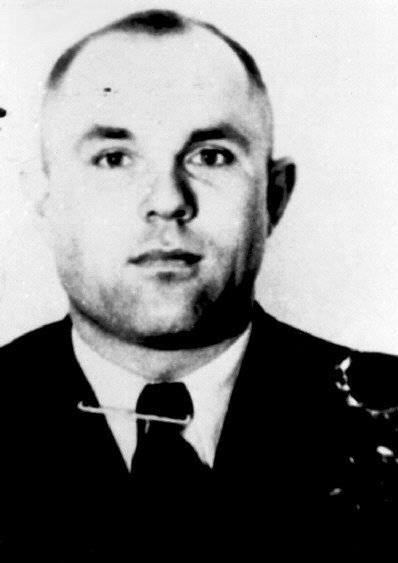
,%20is%20helped%20out%20of%20a%20vehicle%20upon%20his%20arrival%20at%20Federal%20Court%20in%20Cleveland.jpg)
